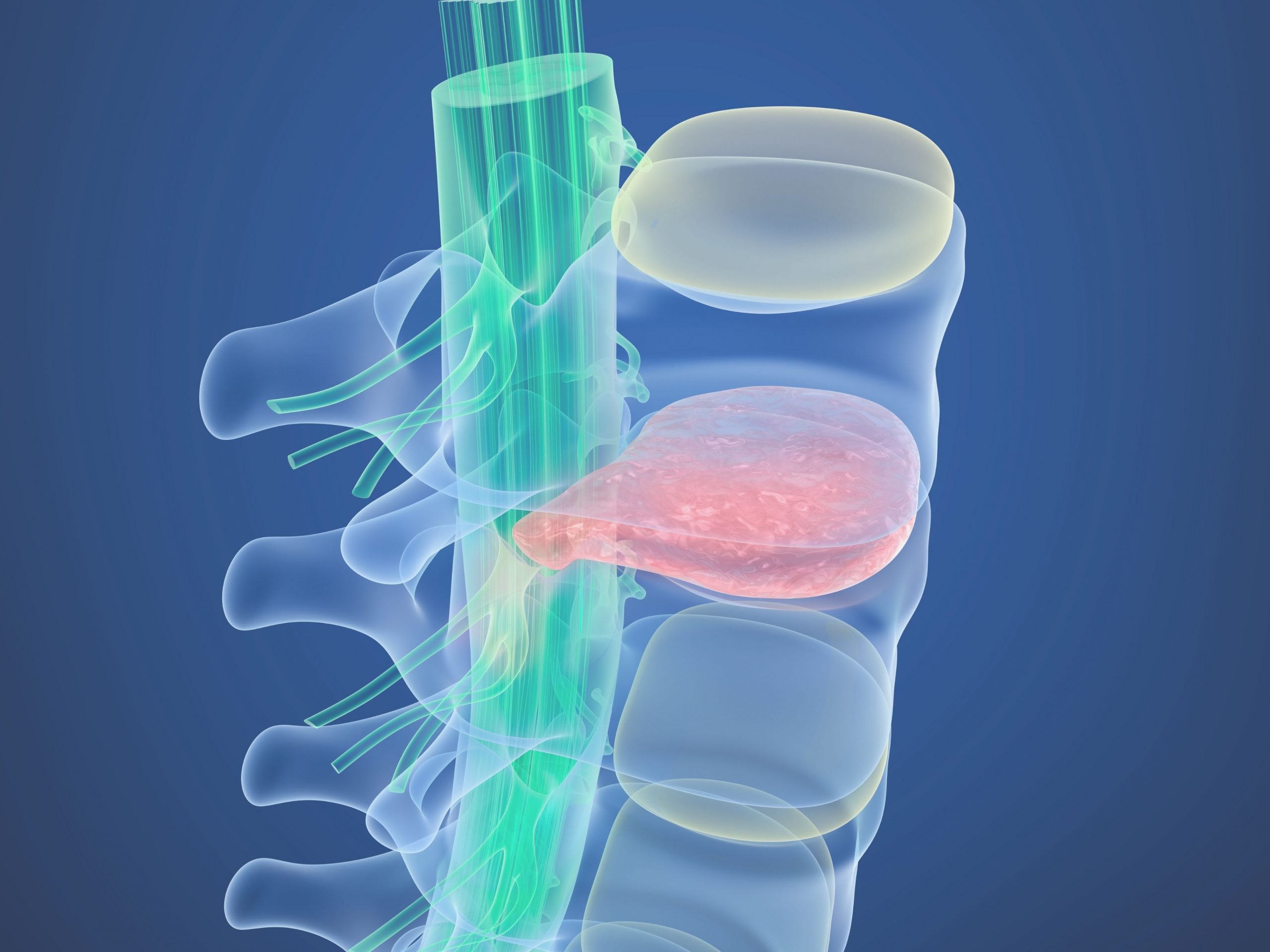7 common questions about bulging disc
1.What is a bulging disc?
Intervertebral disc bulging is the term used interchangeably with disc protrusion or disc herniation. Intervertebral discs are located in our spines between each vertebra, which is a bony bit that forms our spine. There are few types of disc bulges: due to disc degeneration or due to an injury or trauma.
During the degenerative disc bulge, a disc starts losing height because of reduced density of the gel-like fluid located inside of it. This causes an outside layer of a disc to be pushed out resulting in visible bulge which can be detected by an appropriate screening.
Traumatic disc bulge is a result of a tear of the annulus fibrosus which is an outer layer of the disc. This causes the fluid inside of a disc to leak out.
The disc bulge can occur at any level of the spine but are most common in the lumbar and cervical regions which are your lower back and neck respectively.
2.What causes the bulging disc?
Discs usually start bulging due to natural age related changes, however, it can also be caused by an excessive repetitive strain placed on your back for long periods of time. This can speed up the degeneration process, hence, disc bulging can occur earlier in life.
3.What are the symptoms of the bulging disc?
This depends on where the disc is bulging. If the disc bulge occurs at the neck area, then you can experience:
- Neck pain.
- Neck stiffness.
- Muscle stiffness around the neck.
- Pain during certain movements of the neck.
- If the disc is irritating a nerve, you might expect some neural symptoms such as pins and needles, tingling, weakness or numbness radiating into one or both of your arms and hands.
If the bulge occurs at the lower back, you might experience:
- Lower back pain.
- Pain while bending forward or standing up.
- Stiffness and muscle weakness around the lower back region.
- If disc bulge is compressing a nerve, you might experience buttock pain, pain radiating into leg or legs (sciatica), as well as pins and needles, tingling, numbness or weakness in one or both of your legs and feet.
4.Is a bulging disc serious?
This very much depends on the severity of the disc bulge. There are many nerves coming out of the spine and a structure called the spinal canal where our spinal cord is located. Spinal cord is an extension from our brain and is the pathway of communication between our body and brain. Hence, if a disc bulge starts pressing on the spinal cord, you will most likely have to have an operation as ignoring it might result in irreversible changes such as loss of control of legs, arms, bladder and altered sensation in the affected limbs. That’s why it’s only wise to seek the advice of an expert first if you need treatments, such as a herniated disc treatment, for instance.
5.Can bulging disc be treated without operation?
In most cases, conservative, non-invasive treatment modalities such as physiotherapy, osteopathy, massage and dry needling are often recommended first. Although, it is unlikely that degenerative disc bulge will be reversed, traumatic disc bulge can heal by itself. Appropriate exercises combined with manual therapy will help to manage the symptoms, slow down the degeneration rate, improve the quality of life and promote recovery. It usually takes between 4 to 6 weeks for a disc bulge to get better, however, in some cases it might take months.
6.What type of operations are available for bulging disc?
There are 3 common procedures to treat disc bulge. Those are:
- Annuloplasty – is an insertion of a hollow needle into the affected disc. Needle is then heated to 90 degrees C which allows to seal any damaged areas and burn some free nerve endings making the disc less sensitive to pain.
- Percutaneous disc decompression – is a minimally invasive procedure where the part of bulging disc is removed.
- Endoscopic percutaneous discectomy – is another minimally invasive procedure to remove the bulging parts of a disc.
7.What to avoid while having a disc bulge?
Avoid any aggravating activity that is causing more pain or is exacerbating the symptoms. Avoid loading onto your back and heavy lifting because it can increase the disc bulge. Try to reduce or avoid any activities of high impact such as running, jumping or rapid twisting and turning.
We hope this information is useful. If you need advice or have any questions about our treatments, please contact us. You can find us in Mill Hill Broadway and Islington. We are always glad to help. If you like this blog, please share it!
References:
https://www.standupmriofbocaraton.com/pdf/DynamicBulgingOfDiscs_SPINE2009.pdf
http://citeseerx.ist.psu.edu/viewdoc/download?doi=10.1.1.524.9160&rep=rep1&type=pdf
https://www.tandfonline.com/doi/pdf/10.3109/17453679309160105



